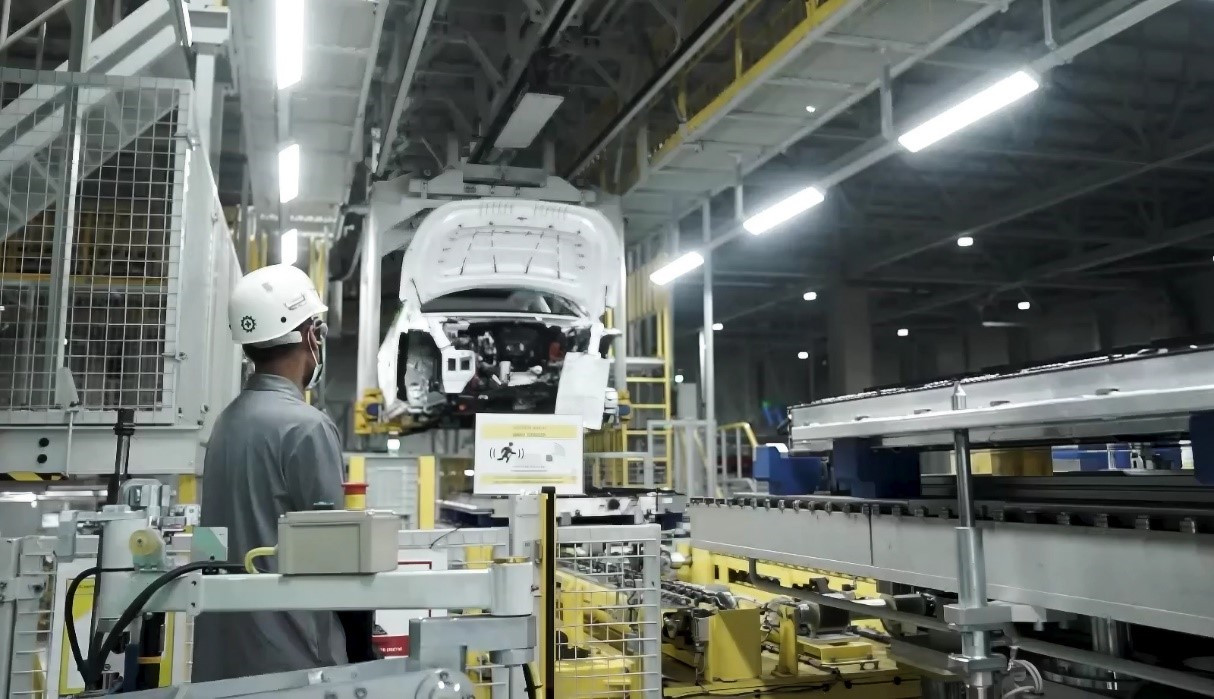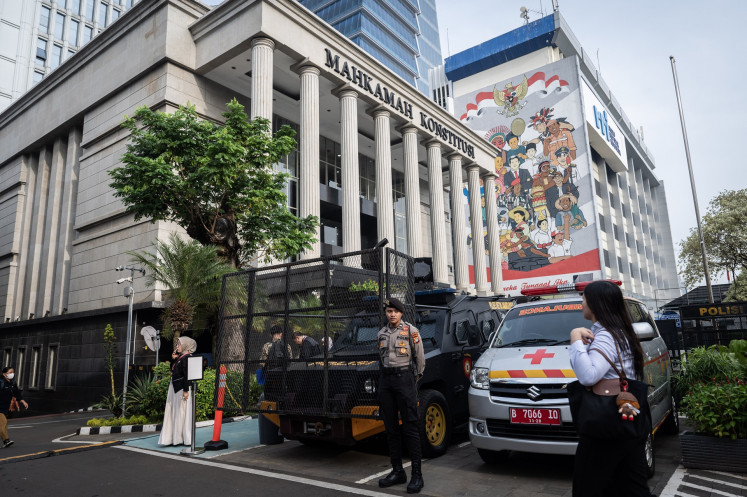Deindustrialization in Indonesia: An opposite viewpoint
Even during the peak of the COVID-2019 pandemic in 2021 the manufacturing sector’s contribution to the gross domestic product (GDP) still increased from Rp 2.76 quadrillion (US$190.3 billion) in 2020 to Rp 2.94 quadrillion or about 19 percent in 2021.
Change text size
Gift Premium Articles
to Anyone

T
he observation that Indonesia is experiencing deindustrialization is groundless. On the contrary, Indonesia has actively promoted industrial development and the manufacturing sector has experienced significant growth in recent years. The government has implemented a variety of policies and initiatives to attract both domestic and international investments, resulting in the establishment of new industries and the expansion of existing ones.
The decline of industrial activity in a country or region is referred to as deindustrialization. It is frequently associated with the relocation of manufacturing and industrial production to other nations, resulting in employment losses, decreased productivity and a decline in GDP growth. While deindustrialization is a concern for many nations, in my view Indonesia is not experiencing deindustrialization but rather a different industrial trajectory.
The manufacturing sector has been the largest contributor of value added to the country’s gross domestic product (GDP) since 2010. Even during the peak of the COVID-2019 pandemic in 2021 the manufacturing sector’s contribution to the GDP still increased from Rp 2.76 quadrillion (US$190.3 billion) in 2020 to Rp 2.94 quadrillion or about 19 percent in 2021.
Indonesia's manufacturing sector has experienced substantial growth in recent years, contributing to the expansion of the economy as a whole. This growth indicates that the nation is not deindustrializing, but rather undergoing structural changes in its industrial landscape.
The government has enacted many policies to create a more enabling environment for attracting foreign investment to bolster the growth of the manufacturing sector. These policies have encouraged multinational corporations to establish manufacturing facilities in Indonesia, thereby creating employment opportunities and expanding the variety of industrial products. Foreign direct investment in the manufacturing sector increased from $156 billion in 2012 to $497 billion in 2022.
Numerous industries, including automotive, electronics, textiles and manufacturing, have found a home in the country. In addition, the diversification of manufacturing activities demonstrates the nation's capacity to adapt to shifting market demands and engage in production with high-added value. The Indonesian government has been effective in integrating the country into the global production chain and hubs for certain high-value export and domestic products.
Typically, deindustrialization is accompanied by substantial job losses and growing unemployment rates. In Indonesia, however, the manufacturing sector has been a major driver of employment creation. Employment opportunities for low-skilled workers have increased due to the establishment of industrial parks and the expansion of manufacturing clusters.
This expansion of the labor market has had a positive effect on poverty reduction and social development. This again is another evidence that deindustrialization is not a major problem in Indonesia.
The government has implemented a number of policies to encourage the incorporation of small and medium-sized businesses into manufacturing processes, and it continues to provide linkages for these smallholders to become a part of the global production chain, such as by supplying auto parts to Japanese manufacturers.
A crucial aspect of deindustrialization is the decline in productivity and the inability to keep up with technological progress. Nonetheless, Indonesia's industrial sector has improved productivity and demonstrated a commitment to technological integration.
The government's emphasis on research and development, combined with academic-industry collaborations, has facilitated the adoption of innovative technologies in manufacturing processes. This technological integration has increased productivity, increased competitiveness and contributed to the expansion of Indonesia's industrial sector.
It is important to observe, however, that technological advancements will have an effect on labor markets. Automation and digitalization brought about by Industrial Revolution 4.0 have reduced the need for blue-collar workers. This is an unavoidable consequence of technological progress, but on the other hand, it compels Indonesia's labor market to prepare for higher skill levels to meet and match industry requirements. The demand for labor ranging from unskilled to highly competent is increasing exponentially.
While Indonesia's industrial sector is expanding, regional disparities and the existence of an informal sector must be acknowledged. Some regions may have difficulty attracting investments and industrial development.
Moreover, the informal sector continues to play an important role in the Indonesian economy, especially in rural areas. However, these factors do not negate the country's overall industrial progress; rather, they indicate areas for additional policy interventions and inclusive economic growth.
In conclusion, the observation of deindustrialization in Indonesia does not accurately reflect the contemporary industrial trajectory of the country. Indonesia has demonstrated resilience and adaptability, sustaining economic growth and expanding its manufacturing industry.
The government's investment policies, emphasis on infrastructure development and technological integration have stimulated industrial growth, resulting in the creation of jobs, an increase in productivity and economic diversification.
The manufacturing industry in Indonesia has demonstrated resilience and adaptability, contributing to the country's economic growth. Among other industries, the nation has effectively developed the automotive, electronics, textiles and food processing sectors. These industries have created jobs, increased exports and stimulated economic activity.
In addition, the government's dedication to infrastructure development has increased Indonesia's competitiveness and facilitated industrial expansion. Investments in transport networks, logistics and industrial zones have enhanced connectivity and fostered the growth of businesses.
***
The writer is senior advisor to the industry minister. The views expressed are his own.









